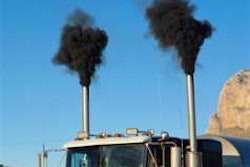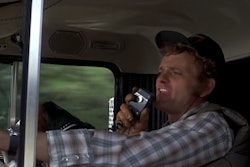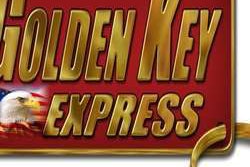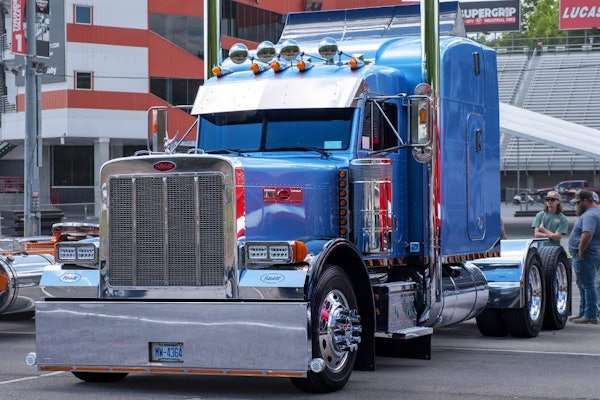SPONSORED INFORMATION
Pay attention to a few key areas to get the most from every gallon of diesel
With diesel prices climbing well above $1.60, even the most conscientious owner-operator needs to take a close look at cutting fuel costs. You can add a mile or two per gallon to your current consumption by paying attention to tried and true ways of improving fuel economy.
Even if diesel drops back to $1.50 a gallon, if you run 125,000 miles per year, you could cut your annual fuel bill by more than $8,000 if you improve consumption from 5 miles per gallon to 6.5 mpg.
Speed
According to Kenworth research, every mile per hour increase over 50 increases fuel consumption by one tenth of a mile per gallon.
The main reason is aerodynamic drag. Its magnitude depends on the speed, frontal area and external shape of the vehicle. If you have a high average speed, a drop of even 5 mph can make a difference because drag increases exponentially with speed. In other words, you burn some extra fuel if your average speed climbs from 50 mph to 60 mph, but you burn much more fuel as average speed climbs above 60.
“So from 60 to 70 miles per hour we can actually see a drag increase of 50 to 60 percent,” says Bruce Lawyer of Peterbilt. The rule of thumb is if you reduce drag by 10 percent, you increase mileage 2 to 3 percent.

Shifting and drving
Shifting at the optimal rpm or investing in an automatic transmission can pamper your engine and create a fuel savings of 3 percent to 5 percent. Even simple practices, such as taking slow stops and starts, can boost your mpg.
You can usually see an improvement if you don’t wind your truck up too much by staying in the sweet bank in the torque curve, at about 1600 rpm. And letting the rpm run down to 1000 or 1100 before shifting up can save fuel mileage.
Automatic transmissions can help with fuel savings because they shift up every time you throttle back to cruise, even when a downshift may be needed soon. It also downshifts whenever the engine gets well below the torque peak and the driver hits the throttle. Automatic transmissions make the shift at the proper rpm and can save up to 3/10 of a mile per gallon.
Idling
Most engines use one gallon of diesel an hour when idling, depending on age and efficiency of engine, idle speed and how many electrical accessories are in use. If your engine idles five hours a day, that’s about $2,700 a year if diesel costs $1.50. Bump that up to eight hours during peak summer or winter months, and you could be spending $3,000 or $4,000 a year in fuel when the wheels aren’t turning.
Devices such as auxiliary cab/bunk heaters, coolers and gen-sets can perform functions traditionally dependent on idling, but can cost hundreds, if not thousands of dollars. Depending on how long you plan to keep your truck, how much fuel is saved by avoiding idling, and the climates you drive in, with a few calculations you can figure out if these devices will pay for themselves.
Another helpful technology on some newer engines is optimized idling. This feature automatically starts and stops the engine to maintain coolant temperature, battery voltage and cab temperature.
Tires
Maintaining proper tire pressure is a simple way to boost fuel economy.
“If your tires are underinflated by 10 percent to 15 percent, then that can increase your fuel costs by 3 percent to 5 percent,” says Cara Junkins with Continental Tire. To keep your tires properly inflated, Junkins suggests checking your tires daily with a calibrated gauge.
The Maintenance Council says spec’ing rib-tread, drive-axle tires instead of lug tread can improve fuel efficiency 2 percent to 4 percent, while using ribs on the drive axles and shallow ribs on the trailer can brighten the picture from 6 percent to 14 percent.
Don’t neglect wheel alignment, either. Even a slight misalignment, say tire manufacturers, can result in 1 percent to 2 percent fuel economy penalty. Check alignment according to manufacturers’ recommendations or if it feels like the truck pulls to one side.
Spec’ing
Spec’ing your powertrain with a “gear fast, run slow” approach can maximize fuel economy and protect your investment in your equipment. This means the powertrain is spec’ed for a high top speed, but you run at generally slower speeds, thereby keeping the engine in an efficient, low-rpm range.
Kenworth officials say fuel economy may fall 10 percent to 15 percent if a gear set is selected that has the truck cruise at the wrong rpm. Make sure you choose a transmission and rear axle to match the engine and load requirements for the specific application.
Spec’ing for lighter weight, of course, reduces the amount of horsepower required. Several hundred pounds can be saved by spec’ing the lightest weight suspension that will support the application.
Aerodynamics
Several exterior features can reduce aerodynamic drag, or how smoothly your vehicle slices through the air.
According to TMC, a standard roof-mounted deflector can improve fuel economy up to 6 percent. A full-roof (sides closed above the roof) fairing can contribute up to a whopping 15 percent, with cab extenders contributing another 2 percent. And a front air dam and tractor side skirts can each contribute up to 3 percent.
The latter serve to shield the high drag of axles, oil pans and other under-cab components. Side skirts also help minimize turbulent near-ground air flow.
TMC advises that outboard components such as external air cleaners, unshielded exhaust stacks and extra mirrors should be minimized.
Lucas Pure Synthetic Oil Stabilizer-Coming Soon!
Lucas Oil Products, the world leader in high performance and heavy duty lubricants, announced recently a new product addition to an already extensive line of superior oils, lubricants and greases. The new Lucas Pure Synthetic Oil Stabilizer, a product that is light enough for an import yet tough enough for a semi, will be available at retail outlets and truck stops early summer.
Lucas Pure Synthetic Oil Stabilizer provides many of the key benefits that the Lucas Heavy Duty Oil Stabilizer does and can be used with both synthetic and non-synthetic oils. It is the perfect additive for providing the extra protection needed for engines that require synthetic or lighter weight oils while also eliminating the noise and wear associated with these oils. It eliminates dry starts in engines, cuts internal friction for more power and stands up to high temperatures and pressure under extreme situations. This is a pure synthetic product and will not void warranties.
Lucas Pure Synthetic Oil Stabilizer is a must for all hard working and high performance engines, transmissions and gear boxes, especially in new and used heavy duty trucks and equipment. It can also replace limited slip differential additives. Another key application for this product is to use it to control heat and wear in motorcycles, air cooled engines and all drive-train components.
Lucas Oil Fuel Treatment and Upper Cylinder Lubricant
Lucas Oil Fuel Treatment and Upper Cylinder Lubricant is the top selling fuel treatment in the auto parts store industry. This product lubricates rings and cylinder walls for longer life while causing more combustion for more power and high fuel mileage with fewer emissions. In fact, the user usually picks up more than enough fuel mileage to pay for the fuel treatment. Lucas Fuel Treatment also cleans and lubricates valves, pumps, carburetors, injectors and compression rings.












